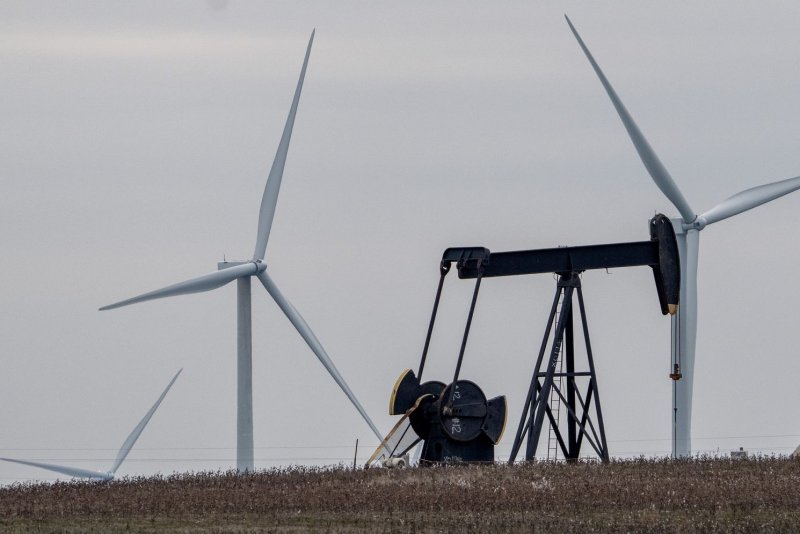1 of 2 | While renewables are gaining traction on the U.S. grid, natural gas remains the dominant source of power, the federal government estimated. File photo by Pat Benic/ UPI |
License Photo
June 8 (UPI) -- Considerable gains in renewable energy are apparent in the energy sector, though natural gas remains the single largest source of power, the U.S. government said.
The U.S. Energy Information Administration, the Energy Department's data cruncher, said it expects a large component of the increase in electric power generation will come from solar, wind and natural gas.
Coal's share on the grid is on the decline as aging plants retire amid stiff competition from gas-powered plants, which are more efficient.
A large component of new power capacity is from wind and solar. Wind capacity reached 8 gigawatts and solar increased to 14.5 GW over the 12-month period to May 31, the EIA reported Thursday.
There are 1 billion watts in a gigawatt. It takes 3 million solar panels or 333 utility-scale wind turbines to produce 1 GW of power.
The International Energy Agency estimated that $2.8 trillion will be invested globally in the energy sector this year, with around $1.7 trillion of that going to cleaner technologies such as nuclear power, renewable energy and electric vehicles. The rest of that, some $1 trillion, will go toward more traditional forms of energy, such as coal.
Fatih Birol, the head of the Paris-based agency, said clean energy investments are accelerating faster than most people realize.
"For every dollar invested in fossil fuels, about 1.7 dollars are now going into clean energy," he said. "Five years ago, this ratio was one-to-one."
But it's natural gas that accounts for the bulk of the power on the U.S. grid, data show. The EIA estimates the amount of electricity coming from natural gas is expected to increased by 3% this summer relative to year-ago levels.
"Additional natural gas-fired generating capacity and favorable fuel costs are the primary drivers of our forecast increase in generation from natural gas this summer," EIA stated.
The United States is abundant in natural gas. So much so that it's helped address the loss of Russian gas in the European market due to war-related sanctions. That's helped pull wholesale natural gas prices back from the record levels seen last year.
Much of the U.S. natural gas reserves in the so-called Appalachia basin, spread out over West Virginia and the surrounding states.















